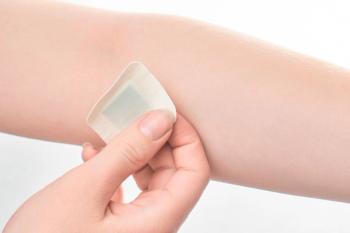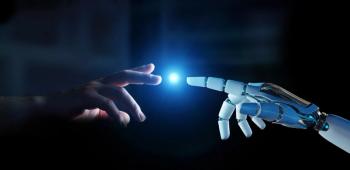
Hedonistic Homeostatic Dysregulation Syndrome: Too Much of a Good Thing?
HHD, which affects only a small percentage (4%) of patients with PD, is characterized by adverse psychomotor effects related to dopamine replacement therapy.
What do drug addicts and persons with Parkinson disease (PD) and hedonistic homeostatic dysregulation (HHD) syndrome have in common? Both fulfill Diagnostic and Statistical Manual of Mental Disorders-IV (DSM-IV) criteria for substance dependence because of compulsive use of excess amounts of a drug with resultant negative consequences.1
HHD, which affects only a small percentage (4%) of patients with PD,2 is characterized by adverse psychomotor effects related to dopamine replacement therapy. Giovannoni and colleagues,2 who described HHD in 15 patients with PD, noted that behavioral abnormalities included alterations in appetite, hypersexuality, pathologic gambling, punding, uncontrollable shopping, and aimless wandering. In the largest study to date of HHD,1 which included 25 patients with PD, clinical features of HHD included severe off-time dysphoria in all patients, disabling dyskinesias in 23 (92%), punding in 22 (88%), social breakdown in 16 (64%), behavioral compulsions (compulsive eating, gambling, sex, shopping, stealing) in 16 (64%), psychosis in 15 (60%), and displayed aggression in 14 (56%).
Giovannoni and colleagues2 have suggested that HHD, which they describe as excessive use of dopamine replacement therapy despite the occurrence of violent and disabling drug-induced dyskinesias and severe psychiatric symptoms, "is a pathological, compulsive disorder designed to avoid the negative withdrawal phase of dopamine replacement therapy."
In a study by Bearn and colleagues
3
that evaluated DSM-IV axis I disorders in 10 patients with HHD and PD and 10 control patients with PD, 70% of the patients with HHD met operational criteria for maladaptive dependence on their dopamine replacement therapy, whereas none of the controls did. The HHD group had a significantly longer mean disease duration (15.8 years vs 9.1 years), higher mean dyskinesia rating (3.2 vs 0.6), greater mean daily levodopa equivalent unit dose (1916 mg vs 617 mg), and greater mean number of daily rescue doses (6.5 vs 0.02).
Ninety percent of the patients with HHD but none of the controls stated that their mood improved after taking dopamine replacement therapy. Three patients with HHD admitted that they used excessive medication to obtain euphoric effects.
Lawrence and colleagues4 have noted that affected patients might consume 1 to 4 g of levodopa a day and that all forms of dopamine replacement therapy, including levodopa, ergot and nonergot dopamine agonists, and subcutaneous apomorphine, are abused. Patients may hoard their medication, obtain medication from several sources, and resist medical advice to decrease their dose.
These authors also cite research suggesting that symptoms of HHD are similar to those seen with abuse of psychomotor stimulants such as amphetamines and cocaine and that excess use of dopaminergic agents also may result in psychosis resembling the psychosis induced by amphetamine and cocaine abuse. Furthermore, withdrawal symptoms similar to those accompanying withdrawal from psychostimulants also may occur.
Why HHD affects a small population of patients with PD is unknown. In a study by Evans and colleagues,1 independent predictors of HHD included novelty-seeking behavior, elevated score on the Geriatric Depression Scale, increased alcohol intake, and younger age at onset of PD. Male sex also appears to be a risk factor.4
"I don't think one can predict who is going to develop this rare syndrome. I think we need to be sensitive to patients who keep asking for more drugs despite being dyskinetic or having behavioral problems such as hallucinations or delusions. These patients behave as addicts. Management needs to be individualized," said Joseph Friedman, MD, director of the Parkinson's Disease and Movement Disorders Center of NeuroHealth, in Warwick, Rhode Island.
Friedman reported on 2 patients in whom he identified HHD.5 Both patients had been taking excessive amounts of levodopa, he explained. One patient developed recurrent psychosis from levodopa overdose, which required repeated hospitalizations. The other patient was quadriplegic but constantly demanded levodopa to alleviate limb stiffness.
The addictive potential of dopaminergic therapy may be mediated by sensitization of subcortical circuitry in the ventral striatal region in susceptible patients, resulting in enhanced dopamine release, according to Evans and colleagues.1 To elucidate the underlying pathophysiology of HHD, they used positron emission tomography to measure the percentage change in 11C-raclopride binding potential from baseline (off-phase) to postadministration of a single oral dose of levodopa/carbidopa in 8 patients with HHD and 8 controls.
Levels of dopamine D2 receptor availability at baseline were similar between the 2 groups. After the administration of levodopa, 11C-raclopride binding potential was significantly reduced in the ventral striatal region of the HHD group compared with the control group, indicating higher drug-induced extracellular dopamine levels. The response of the dorsal putaminal region to levodopa was similar between controls and patients with HHD. These findings suggest a neural sensitization of the ventral striatal dopaminergic circuitry, which mediates certain aspects of reward. Abnormalities in this circuitry may underlie the observed compulsive and excessive dopamine use in patients with HHD.
INTERVENTION
In their reviews on the subject, Giovannoni and colleagues2 and Lawrence and colleagues4 provide virtually the same suggestions to avoid HHD.
- Consider screening patients for risk factors.
- Closely monitor response to dopaminergic therapy.
- Use the lowest dose of a dopaminergic agent that controls motor symptoms.
- Favor long-acting dopaminergic medications over shorter-acting agents to reduce pulsatile stimulation of dopamine receptors.
- Avoid use of intermittent subcutaneous apomorphine in patients who have demonstrated compulsive use of levodopa.
- Reduce the dosage of dopamine replacement therapy to ameliorate behavioral symptoms should they occur.
- Consider low-dose antipsychotic therapy with an atypical agent such as olanzapine (Zyprexa), quetiapine (Seroquel), or clozapine in patients who have psychotic episodes, but monitor closely for subsequent emergence of depression or suicidal ideation.
Lawrence and colleagues4 go on to suggest that patients with HHD should receive medication under strict supervision whereby they, for instance, receive only a single day's dose at a time. They concede that such a regimen is difficult, in part because the patient often has alternative means of gaining access to medication. Furthermore, caregivers responsible for dispensing and withholding medication may be targets of the patient's aggression. Psychotherapy and enrollment into a substance abuse rehabilitation program may be beneficial; however, the authors concede that prognosis is poor and relapse is common in patients with HHD.
"I think it's important from the beginning to emphasize that the physician should be completely in control of medication dosage," said Kathleen Shannon, MD, associate professor of neurological sciences at Rush-Presbyterian-St Luke's Medical Center in Chicago. "Young onset patients seem predisposed to [HHD]. I always initiate treatment with direct-acting dopamine agonists and screen for compulsive behavior, such as gambling, shopping, or change in sexual behavior. In general, shorter-acting agents are more addicting, so using the longer-acting agent may be helpful. It's difficult to know whether someone is getting their medications from multiple doctors, but it is helpful that most patients' insurance will not allow them to exceed a 30-day supply of medications."
Shannon has treated several patients with HHD but believes that the incidence rate is less than 4%. "We ask all of our patients about compulsive behaviors and about their current drug dose. About 6% have compulsive behaviors, such as gambling or shopping, but usually don't have the [need for] escalating dopaminergic doses and don't experience the severe dyskinesias of HHD."
"The behavioral aspects of PD have only come to the fore recently. I believe that this represents an increasing sensitivity on the part of neurologists and other doctors to behavioral aspects of neurologic disease," Friedman concluded.
REFERENCES1. Evans AH, Lawrence AD, Potts J, et al. Factors influencing susceptibility to compulsive dopaminergic drug use in Parkinson disease. Neurology. 2005;65:1570-1574.
2. Giovannoni G, O'Sullivan JD, Turner K, et al. Hedonistic homeostatic dysregulation in patients with Parkinson's disease on dopamine replacement therapies. J Neurol Neurosurg Psychiatry. 2000;68:423-428.
3. Bearn J, Evans A, Kelleher M, et al. Recognition of a dopamine replacement therapy dependence syndrome in Parkinson's disease: a pilot study. Drug Alcohol Depend. 2004;76:305-310.
4. Lawrence AD, Evans AH, Lees AJ. Compulsive use of dopamine replacement therapy in Parkinson's disease: reward systems gone awry? Lancet Neurol. 2003;2:595-604.
5. Borek LL, Friedman JH. Levodopa addiction in idiopathic Parkinson disease. Neurology. 2005;65:1508.
Newsletter
Receive trusted psychiatric news, expert analysis, and clinical insights — subscribe today to support your practice and your patients.














